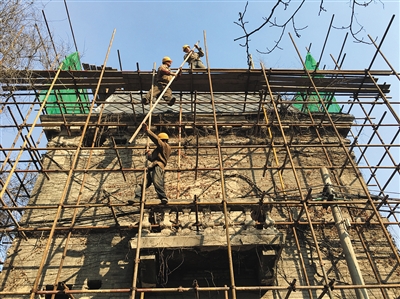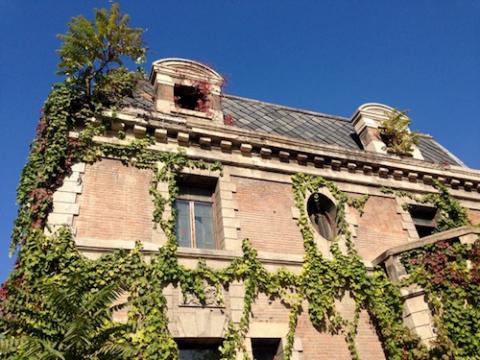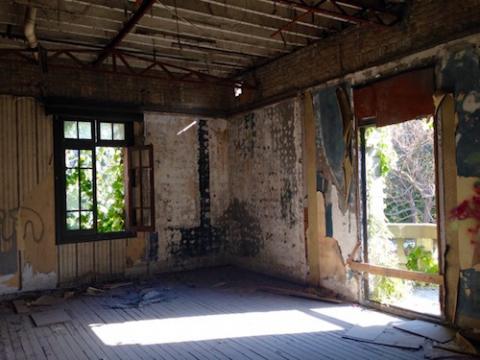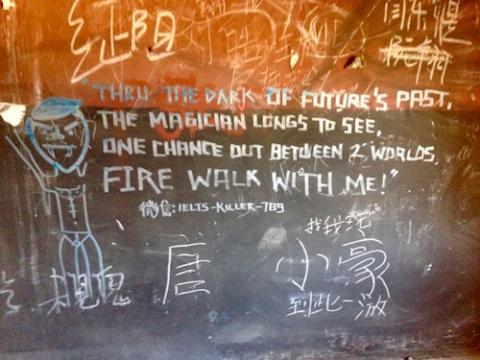Beijing's pre-eminent haunted house – a 100-year-old Western-style building that somehow avoided being torn down for at least 67 years – is now under renovation and will open as a tourist attraction in October, the Beijing News reports.
Unoccupied since at least 1949, the complex of two classic French Baroque-style mansions at No. 81 Chaonei Dajie, just inside the second ring from Chaoyangmenwai, has been boarded up literally for decades, and oddly was left standing even as almost all other areas of the neighborhood have undergone massive urban renewal.

Workers set up scaffolding around 81 Chaonei yesterday
The place has earned a reputation over the years as a haunted house, with urban explorers often breaking into the loosely guarded premises to explore, as our beijingkids correspondent Sisi Chen did last year. The building was even the subject of a Chinese horror movie released in 2014, The House that Never Dies.

Ivy and other plants thrive on the property in the warmer months
The provenance of the house is a bit unclear, with the prevailing word on the street being that it was built in 1910 by the American Catholic Church and used as a Chinese language school to train foreign missionaries. Others say it was later the private residence of the French manager of a railway construction company.
The ghost story goes something like this: When the Communists defeated the KMT in 1949, an officer who had taken up residence in the mansion left his wife (or concubine) behind as he fled to Taiwan. In her grief, she hung herself from the rafters of the house and has haunted the place ever since.

The interior has seen better days
However, the overseers of the building, the Beijing Catholic Diocese, deny knowledge of any suicides in the building, and said that no Kuomintang officer ever lived there. They said one of the last residents was a Belgian woman who apparently left in 1949.
Meng Qi, the office director of Beijing Catholic Diocese, said the Civil Affairs Bureau took over the property in 1949, and it was not returned to the diocese until 1995. Since that time, the diocese has not had funds to make any repairs.

Graffiti artists have had their way with most of the interior
A recent grant from the government has given the diocese the opportunity to rebuild the place as a historical site and architectural attraction, slated for reopening for October.
Images: Sisi Chen, The Beijing News, Baidu Maps
Tracy Wang(thebeijinger)
Using WeChat? Scan QR Code or Press the Fingerprint Below ↓
--- (Or ADD WeChat ID: OKOKOKOKnet)
